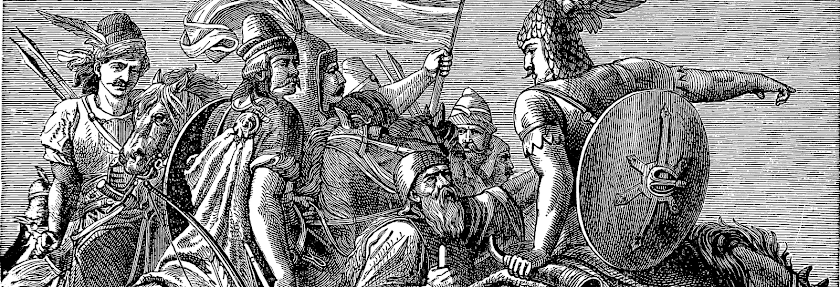Just what it says on the tin:
Had a good time at the Maryland Renaissance Fair(e) this weekend. Rediscovered mead; much like honeyed whiskey, but with strong overtones of water. The jousting at German renn faires was better, but this one had elephants and pythons and a
cursing well which I am stealing for my upcoming campaign, so hey.
Also picked up a copy of Colonial Battlefleet from the wargame vault today. Interesting system. Their initiative mechanic and the roles mechanism are both interesting changes from Starmada, and the fact that they provide a Big List of Weapons should prevent some of the
guncheese we had in Starmada: Admiralty. I don't like how they laid out said table (by weapon tonnage, rather than alphabetically by weapon name or weapon 'family'), but that is at least a useful ordering during ship contruction. Their shields are also very different from S:AE shields (would be interested in seeing some non-forward-focused shields, but I'm happy enough as-is without the extra complexity). I like the way they handled tech levels, mostly, except for Laser Weaponry, which I think they screwed up with regards to Screen role availability. One thing that does torque me off a little is some of the really implausible faux science used to justify mechanics that are in place for game balance reasons - things like "When you teleport something, all inorganic chemical reactions in it cease. As a result, you can only teleport marines, not bombs." That grinds my gears a bit; you could've just said "You can't teleport bombs because the yield isn't sufficient for a man-sized bomb to damage a starship" (since scale is intentionally vague), or built a bomb-teleporter weapon, or left the players to not think of it like we didn't in six months of Starmada games with teleporter-marines, but no. Instead you had to make something ridiculous up and call attention to it, which might produce a counter like "OK, that's cool, we're the Tyranids and we're going to build living bomb-marines with organic detonators. Wheee-BOOM." That said, upon running a test game against myself with some converted
Homeworld ships, it was quick, bloody, reasonable simple, and overall satisfactory. So if any of the old Starmada Crew is reading this, I'm down for some games over internet (it's hex-based, so should work fine with VTTs). Fair warning, though - I have been growing out my beard since the weather cooled off... (for those unfamiliar, we observed that gamers with beards were significantly more likely to win at Starmada than were clean-shaven gamers. The prevailing hypothesis is that this was due to the increase in planning efficiency acquired by stroking one's beard)
Oh yeah. The editing is not fantastic, and some areas are lacking examples, but the intent of the rules is generally clear, so it's just sort of annoying rather than obstructionary.
Finally, ACKS setting. Contemplated Wilderlands of High Fantasy, Northern Reaches (Western Marches into mythic Scandinavia), and Midnight in the Late 3rd Age. Am currently settled on "The Scaled Continent". The pitch:
In elder days, the children of squamous gods ruled the world, and man, elf, and dwarf suffered beneath their forked and envenomed lash. But now their empire has fallen to ruin under rebellion and internal strife, and the men of Aura seek the reclaim the treasures that were once stolen from them and taken across the Sea of Tears, to line the jungled halls of the serpent-kings. From the Isle of Voltager, their settlers and adventurers struggle against the environment, the natives, and sometimes each other for the riches of... the Scaled Continent.
Thematic elements:
- Settings:
- heavily-trapped temples to bloodthirsty gods
- overgrown and ruined cities of the Old Masters
- human frontier settlements (incl. abandoned and overtaken)
- the Serpent's Tongue (major river)
- sailing ships anchored off the coast
- volcanoes
- Opposition:
- Lizardmen, frogmen, toadmen, turtlemen, crocodilemen, &c
- With accompanying witch-doctors and guardbeasts
- Prehistoric and/or gigantic beasts
- yes dinosaurs
- also giant cockroaches
- and dire armadillos carrying dire leprosy
- Monsters from South American and/or African myth and ecology
- (some research required, void where inaccurate)
- Dragons
- Pirates
- Dragon-pirates
- Screaming river-eels
- Wereleopards (forvalaka)
- Anything with scales that didn't fall into the above categories
- Ambulatory plant life
- Dysentery and worse jungle diseases
- Monsoon season
- Resources:
- Local guides
- Mules
- Dugout canoes
- Treasure maps of dubious veracity
- Steel and alcohol (as trade goods with the natives)
- Gullible henchmen (but when aren't those a resource?)
- Treasure:
- Golden idols
- Crystal skulls
- Rubies the size of a man's fist
- Holy grails?
- Spellbooks containing forgotten and forbidden spells of the reptile mages, written on halfling-skin vellum (demium?)
- Exotic spices and hardwoods
- Rescued slaves
- Cities of gold
- Fountains of youth
- Possible untimely death
- Modules:
- Thematic fiction:
- "Lost World" stories
- Heart of Darkness
- Pulp portrayals of the tropics (eg, King Kong)
So! Time to map! Oh wait, I can just write "JUNGLE" in great big capital letters on a hexmap and be mostly good to go. Just have to draw a coastline, some islands, a river, and a distant mountain range...
